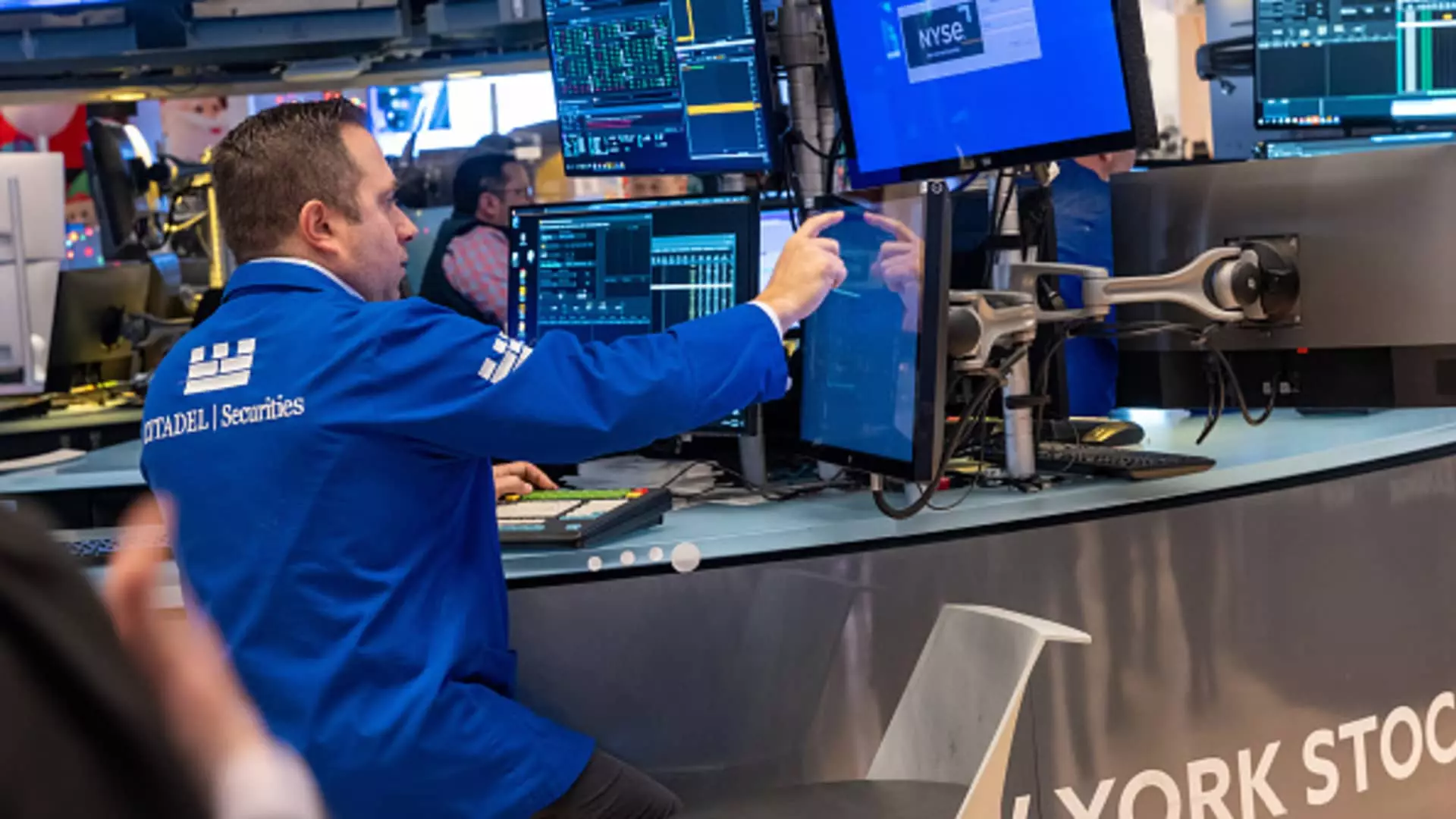The stock market experienced a significant downturn on Friday when an unexpectedly robust jobs report sent shockwaves through Wall Street. Investors grappled with the implications of strong employment figures, leading to a drop in major stock indices, including declines of 592 points or 1.4% in the Dow Jones Industrial Average, alongside similar losses in the S&P 500 and Nasdaq Composite. This article dissects the market’s response to the employment data, analyzes the economic climate’s impact on investor sentiment, and reflects on the broader implications for interest rates and stock performance.
A key driver of the market’s reaction was the U.S. Bureau of Labor Statistics’ report indicating a payroll increase of 256,000 jobs in December, significantly surpassing economists’ expectations of a mere 155,000. This surprising uptick in job growth lowered the unemployment rate from an anticipated steady 4.2% to 4.1%. Initially, one might assume that good news in employment should bolster market confidence and foster positive investor sentiment. However, the reality is more complex; strong job statistics raised concerns about prolonged higher interest rates as the Federal Reserve may now be reluctant to cut rates further this year.
Scott Wren, a senior global market strategist at Wells Fargo, highlighted this paradox, stating, “Good news for the economy but not for the markets, at least for now.” This sentiment underscores the intricate relationship between labor market health and investor behavior, particularly concerning future interest rate policies.
With traders now assigning a 97% probability that the Federal Reserve will maintain interest rates during its upcoming meeting in January, the expectation shifted dramatically. The projections for a rate cut in March dwindled from 41% to approximately 25%. This pessimism surrounding potential cuts triggered a rise in the yield on the 10-year Treasury note, reaching levels not seen since late 2023. This movement reflects a broader skepticism about how the Fed will approach the economic landscape, especially in light of the recent job figures.
The tension between healthy economic indicators and the Fed’s monetary policy creates a classic dilemma for investors. They face the challenge of navigating a landscape where rising rates could stifle growth in certain sectors, particularly high-growth industries sensitive to borrowing costs.
As the employment data was digested, market reactions varied across sectors, with growth stocks particularly vulnerable. Companies such as Nvidia, which experienced a decline of 2.5%, and other tech giants like AMD and Broadcom, which dropped by 5.2% and 2.1%, respectively, bore the brunt of investor caution. The Russell 2000 index, comprising smaller companies that are often more sensitive to interest rate fluctuations, fell over 2%.
Adam Turnquist, the chief technical strategist at LPL Financial, posited that this rapid movement in rates indicates a risk of a pullback in equity markets. He added an essential perspective: while the immediate market reaction may appear negative, the context of rising rates reflects an economy performing better than expected, suggesting potential for enhanced earnings and reduced recessionary risks down the line.
The tumultuous day on Wall Street illustrates the complexities and unpredictabilities of the financial markets. As major indices faced a week of losses—with the S&P 500 down 1.8% and the Nasdaq Composite sliding 2.4%—investors must brace for potential volatility driven by macroeconomic indicators. The job growth report, while generally a positive signal for the U.S. economy, foreshadows a period where rising interest rates could dictate market movements. As traders assess their strategies moving forward, the critical takeaway remains that strong economic fundamentals can yield mixed results in the financial markets, highlighting the necessity for informed investment decisions in an ever-evolving landscape.


Leave a Reply